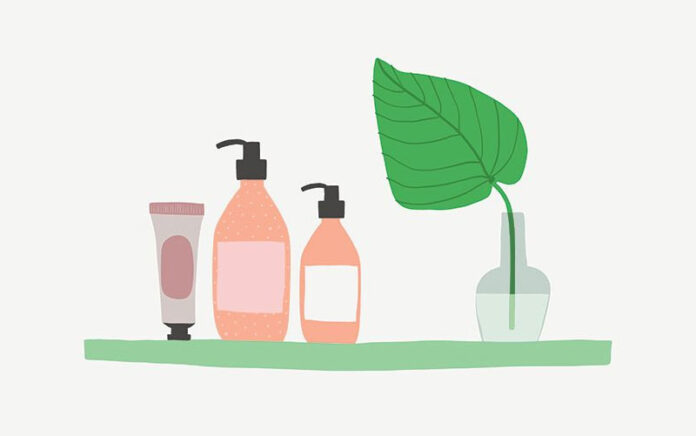
The beauty industry is undergoing a significant transformation, with the rise of clean beauty taking center stage. In recent years, consumers have become increasingly conscious of the ingredients in their personal care products and the potential health and environmental risks associated with them. As a result, there has been a growing demand for toxin-free products that prioritize natural and sustainable ingredients.
In this article, we will explore the concept of clean beauty, its benefits, and how it is reshaping the beauty landscape.
Understanding Clean Beauty
Clean beauty refers to products that are formulated without potentially harmful or toxic ingredients. These ingredients may include parabens, phthalates, sulfates, formaldehyde, and synthetic fragrances, among others. Clean beauty brands strive to create products that are safe for both the consumer and the environment, using natural and organic ingredients whenever possible.
The concept of clean beauty goes beyond just avoiding certain ingredients. It encompasses a holistic approach to beauty that emphasizes transparency, sustainability, and ethical practices. Clean beauty brands often prioritize cruelty-free testing, eco-friendly packaging, and responsible sourcing of ingredients.
The Benefits of Clean Beauty
Choosing clean beauty products can have a range of benefits for both your health and the environment. Here are some key advantages:
1. Healthier Ingredients
Conventional beauty products often contain chemicals that can potentially irritate the skin, disrupt hormones, or have other adverse effects on our health. Clean beauty products, on the other hand, are formulated with natural and gentle ingredients that are less likely to cause harm. This can be particularly beneficial for individuals with sensitive skin or those who are prone to allergies.
2. Environmental Sustainability
The beauty industry has a significant impact on the environment, from ingredient sourcing to product manufacturing and packaging. Clean beauty brands strive to minimize their ecological footprint by using sustainable practices. They may opt for organic farming methods, support fair trade initiatives, or use recyclable and biodegradable packaging materials. By choosing clean beauty, you can contribute to the preservation of our planet’s resources and reduce waste.
3. Ethical Considerations
Clean beauty brands often prioritize ethical considerations throughout their supply chain. This includes ensuring fair wages and safe working conditions for farmers and laborers involved in ingredient production. Additionally, many clean beauty brands are committed to not testing their products on animals, opting for cruelty-free alternatives instead. By supporting clean beauty, you are aligning yourself with brands that value ethical practices and social responsibility.
The Clean Beauty Movement
The clean beauty movement has gained significant momentum in recent years, driven by consumer demand for safer, more sustainable alternatives. Social media and online platforms have played a crucial role in raising awareness about the potential risks associated with certain beauty products. Influencers, bloggers, and beauty enthusiasts have shared their experiences and educated their followers about the benefits of clean beauty.
As a result, established beauty brands have started reformulating their products to meet the clean beauty standards. They are eliminating potentially harmful ingredients and adopting more sustainable practices. Additionally, new clean beauty brands are emerging, offering a wide range of innovative and effective products that cater to the growing demand for clean alternatives.
How to Identify Clean Beauty Products
With the increasing popularity of clean beauty, it’s important to know how to identify genuine clean products. Here are some tips to help you make informed choices:
- Read the Ingredient List: Look for products with simple, recognizable ingredients. Avoid products that contain potentially harmful chemicals or artificial fragrances.
- Look for Certifications: Look for certifications from reputable organizations such as COSMOS, EWG Verified, or Leaping Bunny. These certifications indicate that the products have met specific clean beauty standards.
- Research the Brand: Do some research on the brand’s values, mission, and commitment to clean beauty. Check if they have transparent ingredient sourcing and manufacturing processes.
- Read Reviews: Seek out reviews and recommendations from trusted sources or fellow consumers who have tried the product. Their experiences can provide valuable insights into the effectiveness and safety of the product.
Embracing Clean Beauty in Your Daily Routine
Incorporating clean beauty products into your daily routine doesn’t have to be overwhelming. Here are some simple steps to get started:
- Assess Your Current Products: Take a look at your existing beauty and personal care products. Identify the ones that may contain potentially harmful ingredients and prioritize replacing them with clean alternatives.
- Transition Gradually: Instead of replacing all your products at once, transition gradually. Start with essentials like cleansers, moisturizers, and sunscreen, and then expand your clean beauty collection over time.
- Research and Experiment: Take the time to research different clean beauty brands and products. Experiment with samples to find the ones that work best for your skin type and preferences.
- Educate Yourself: Stay informed about clean beauty trends, ingredient safety, and sustainable practices. By educating yourself, you can make empowered decisions and advocate for a cleaner and safer beauty industry.
Skincare Products: Enhance Your Beauty Routine
Taking care of your skin is essential for maintaining a healthy and vibrant complexion. Skincare products play a vital role in nourishing and protecting your skin from environmental factors that can cause damage and premature aging. In this section, we will explore some popular skincare products and their benefits, helping you choose the right ones for your specific needs.
Cleansers
Cleansers are the foundation of any skincare routine. They effectively remove dirt, oil, and impurities from your skin, leaving it clean and refreshed. Cleansers come in various forms, including gels, creams, foams, and oils, catering to different skin types and preferences. Look for gentle cleansers that won’t strip your skin of its natural moisture, and consider ingredients like hyaluronic acid or glycerin for added hydration.
Toners
Toners are used after cleansing to balance the skin’s pH level and prepare it for the next steps in your skincare routine. They help remove any remaining impurities and tighten the appearance of pores. Toners can also provide additional hydration and deliver specific ingredients like antioxidants or exfoliating agents. Opt for alcohol-free toners to avoid drying out your skin, and choose formulas with soothing ingredients like aloe vera or chamomile for sensitive skin.
Serums
Serums are concentrated formulations packed with active ingredients that target specific skin concerns. They have a lightweight texture that allows the ingredients to penetrate deeply into the skin. Serums can address a wide range of issues, such as hydration, brightening, firming, or reducing the appearance of wrinkles. Look for serums with ingredients like vitamin C, hyaluronic acid, retinol, or niacinamide, depending on your skin goals.
Moisturizers
Moisturizers are crucial for maintaining hydration and protecting your skin’s moisture barrier. They come in various forms, including creams, lotions, and gels, catering to different skin types. Moisturizers help prevent water loss, keeping your skin soft, supple, and plump. Look for moisturizers with ingredients like ceramides, antioxidants, or hyaluronic acid to lock in moisture and provide additional nourishment.
Sunscreens
Protecting your skin from the harmful effects of the sun is essential for maintaining healthy and youthful-looking skin. Sunscreens shield your skin from the damaging UVA and UVB rays, reducing the risk of sunburn, premature aging, and skin cancer. Choose broad-spectrum sunscreens with an SPF of 30 or higher, and apply them generously to all exposed areas of your skin. Opt for lightweight, non-greasy formulas that won’t clog your pores or leave a white cast.
Clean Beauty: A Step Towards a Healthier and Sustainable Future
The rise of clean beauty represents a significant shift in the beauty industry towards a healthier and more sustainable future. By choosing clean beauty products, you are not only prioritizing your well-being but also contributing to the overall well-being of the planet. The demand for clean beauty continues to grow, encouraging more brands to adopt cleaner formulations and sustainable practices.
As consumers, we have the power to drive change by supporting clean beauty brands and demanding transparency and accountability from the beauty industry as a whole. By embracing clean beauty in our daily routines and making informed choices, we can be part of a movement that promotes safer, more ethical, and environmentally friendly beauty products.
Conclusion
Clean beauty is not just a passing trend; it is a paradigm shift that is here to stay. The rise of toxin-free products reflects our collective desire for a healthier and more sustainable approach to beauty. By choosing clean beauty, we can protect our health, minimize our impact on the environment, and support brands that prioritize transparency and ethical practices.
So why not join the clean beauty movement today and embark on a journey towards a cleaner, greener, and more beautiful future?
FAQs
How often should I cleanse my face?
It is generally recommended to cleanse your face twice a day, in the morning and evening. However, if you have dry or sensitive skin, cleansing once a day in the evening may be sufficient.
Can I use multiple serums in my skincare routine?
Yes, you can layer multiple serums in your skincare routine. Start with the thinnest consistency serum and work your way up to the thickest. Allow each serum to absorb fully before applying the next one.
Should I moisturize if I have oily skin?
Yes, even if you have oily skin, moisturizing is important. Look for oil-free or lightweight moisturizers specifically formulated for oily skin. These moisturizers can help balance oil production and keep your skin hydrated without clogging your pores.
When should I apply sunscreen in my skincare routine?
Sunscreen should be the last step in your skincare routine, applied after moisturizer. Allow your moisturizer to fully absorb before applying sunscreen. Reapply sunscreen every two hours, especially if you are exposed to direct sunlight.
How do I choose skincare products for sensitive skin?
When selecting skincare products for sensitive skin, look for gentle, fragrance-free formulations. Avoid harsh ingredients like alcohol, sulfates, and synthetic fragrances. Patch-test new products on a small area of your skin before applying them to your entire face.
Can men use skincare products too?
Absolutely! Skincare is not limited to any gender. Men can benefit from using skincare products tailored to their specific needs, such as moisturizers, cleansers, and sunscreens.
How long does it take to see results from skincare products?
The time it takes to see results can vary depending on the product and your skin concerns. Some products may show immediate results, while others may take weeks or months of consistent use. Be patient and give the products enough time to work.






